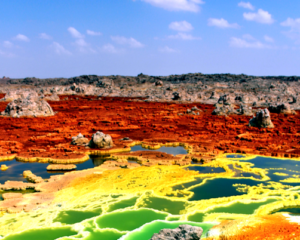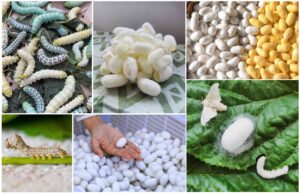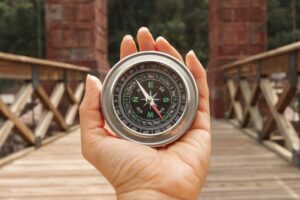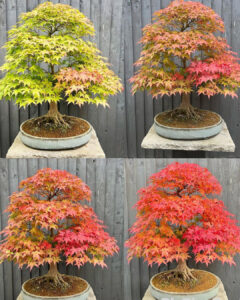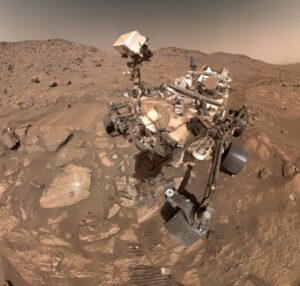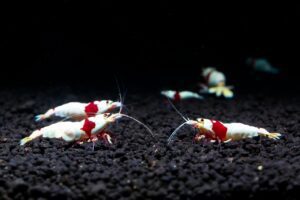Foraging, the act of searching for wild food resources, has been gaining popularity in recent years as people rediscover the joys of connecting with nature and the satisfaction of sourcing their own food.
Foraging is not just about finding food; it’s a way to engage with the environment, learn about ecosystems, and embrace a simpler way of life.
 Pin
Pin Image by ClarkandCompany from istock
Table of Contents
1. The Art of Foraging: A Journey into Nature's Pantry
 Pin
Pin Photo by Vasilina Sirotina on Unsplash
One of the most appealing aspects of foraging is the opportunity to enjoy fresh, organic produce that can’t be found in supermarkets. From succulent berries and flavorful mushrooms to wild greens and aromatic herbs, nature offers a diverse array of delicious and nutritious foods waiting to be discovered.
But foraging isn’t just about the culinary rewards; it’s also a chance to slow down, tune in to the rhythms of nature, and practice mindfulness. The act of foraging encourages us to be present in the moment, sharpen our senses, and develop a deeper appreciation for the natural world that surrounds us.
If you’re new to foraging, it’s essential to start slowly and educate yourself about the plants and fungi in your area. Consider joining a local foraging group, taking a guided foraging tour, or investing in a reliable field guide to help you identify edible species safely.
When foraging, always prioritize sustainable practices by harvesting ethically and responsibly. Respect the environment by only taking what you need, being mindful of endangered species, and avoiding areas that have been treated with pesticides or other harmful chemicals.
Foraging is a fulfilling and enriching activity that offers a unique way to engage with nature, source fresh and delicious food, and foster a deeper connection to the world around us. So grab a basket, put on your walking shoes, and embark on a foraging adventure to unlock the wonders of the natural world right at your doorstep.
2. Benefits of Foraging: From Fresh Flavors to Environmental Awareness
 Pin
Pin Photo by Irina Iacob on Unsplash
Foraging offers a unique array of benefits that encompass physical, mental, and environmental aspects. Beyond providing access to fresh, nutrient-rich foods, foraging promotes a deeper connection to nature, encouraging mindfulness and reducing stress. It cultivates a sense of self-sufficiency and resourcefulness, while also enhancing one’s knowledge of plants and ecosystems.
Foraging fosters a greater appreciation for biodiversity and sustainable living practices, leading to increased environmental awareness. The benefits of foraging extend far beyond the plate, enriching both the individual and the planet by celebrating the abundance and diversity of the natural world.
3. Getting Started: Essential Tools and Safety Precautions
 Pin
Pin Getting started with foraging requires essential tools and safety precautions to ensure a successful and secure experience. A reliable field guide specific to your region is vital for identifying edible plants and avoiding harmful ones. Basic tools such as a knife, gloves, and a basket are indispensable for harvesting and carrying foraged goods.
Prioritizing safety, understanding plant characteristics and potential look-alikes is crucial to prevent accidental ingestion of toxic species. It’s advisable to forage with an experienced guide initially and always seek permission before foraging on private land. By equipping oneself with the right tools and precautions, foraging can be a rewarding and safe adventure in nature.
4. Know Before You Go: Researching Local Flora and Fauna
Before venturing into foraging, researching local flora and fauna is crucial for a safe and successful experience. Start by familiarizing yourself with native plants and their seasons of availability to identify potential foraging spots. Learn about toxic look-alikes and endangered species to make informed harvesting decisions.
Understanding the habitats and ecosystems where wild foods grow helps in locating them sustainably. Consider factors like soil quality, sunlight, and water sources that affect plant growth. By conducting thorough research beforehand, you not only enhance your foraging skills but also contribute to the conservation of natural resources. Remember, knowledge is key to a fruitful foraging expedition.
5. Identifying Edible Plants and Fungi: A Beginner's Guide
In the realm of foraging, identifying edible plants and fungi is a fundamental skill for beginners. Start by focusing on easily recognizable species like dandelions, blackberries, or chanterelle mushrooms. Utilize field guides, online resources, and local workshops to learn key identifying features such as leaf patterns, growth habits, and color variations. Pay special attention to toxic look-alikes to avoid dangerous mistakes. Begin with a small number of well-known species to build confidence before branching out. Cultivate a keen eye for detail and consult with experienced foragers to deepen your knowledge. With practice and patience, mastering the art of identifying edible plants and fungi opens up a world of culinary delights in nature.
6. Sustainable Foraging Practices: Leave No Trace, Take Only Memories
Embracing sustainable foraging practices is essential to conserve natural ecosystems for future generations. Adhere to the principle of “Leave No Trace, Take Only Memories” by harvesting in moderation and respecting plant populations. Avoid overharvesting by only taking what you need and leaving behind enough for the ecosystem to thrive. Harvest invasive species to help restore balance in the environment. Obtain necessary permissions before foraging on private or protected lands, and always follow regulations to safeguard fragile habitats. By adopting a mindful and respectful approach to foraging, we can enjoy the bounty of nature while preserving its beauty and biodiversity for years to come.
7. Top Foraging Locations: Parks, Forests, and Coastal Regions
Foraging enthusiasts seek diverse treasures in top locations like parks, forests, and coastal regions. Parks offer urban foragers a haven for edible finds amidst green spaces and trails. Forests boast a plethora of wild edibles like mushrooms, berries, and herbs, waiting to be discovered under the canopy. Coastal regions teem with seaweed, shellfish, and coastal plants, providing a bounty from the sea. Each habitat presents unique foraging opportunities, inviting adventurers to explore and connect with nature’s abundance. Whether in bustling parks, serene forests, or dynamic coastlines, these top foraging locations beckon with a promise of culinary delights waiting to be unearthed.
8. Foraging with Experts: Workshops, Tours, and Online Resources
Foraging with experts elevates your wild food journey through workshops, tours, and online resources. Joining workshops offers hands-on learning, where seasoned foragers share knowledge on identifying, harvesting, and preparing wild edibles. Guided tours lead you through diverse ecosystems, unveiling hidden culinary gems while emphasizing sustainable foraging practices. Online resources provide a wealth of information, from plant identification guides to recipes, connecting foragers worldwide. Learning from experts enriches your foraging experience, ensuring safety and deeper insights into the natural world. Whether in interactive workshops, immersive tours, or virtual platforms, foraging with experts opens doors to a world of wild edibles waiting to be explored.
9. Cooking with Foraged Ingredients: Recipes and Culinary Inspiration
Cooking with foraged ingredients sparks creativity and culinary innovation, offering a natural bounty of flavors and textures. Explore a world of delicious possibilities by incorporating wild edibles into your recipes, from savory dishes to delectable desserts. Experiment with foraged mushrooms, wild herbs, and seasonal fruits to add a unique touch to your cooking. Embrace the challenge of blending familiar ingredients with wild finds to create memorable meals that celebrate nature’s abundance. Whether following traditional recipes or crafting your own creations, cooking with foraged ingredients imbues dishes with a special charm and a connection to the land, igniting a passion for nature’s pantry.
10. Preserving Your Foraged Finds: Drying, Freezing, and Pickling Tips
Preserving your foraged finds is key to enjoying nature’s bounty year-round. Drying herbs, mushrooms, and fruits retains flavors while extending shelf life. Freezing foraged berries and greens locks in freshness for later use in smoothies or baked goods. Pickling wild vegetables and garlic scapes adds zing to dishes and preserves them deliciously. Mastering these preservation techniques ensures a sustainable supply of foraged treasures beyond their seasons. With careful drying, freezing, and pickling methods, you can savor the taste of the wild in your culinary creations, even when foraging season has passed.
When foraging, remember to tread lightly on the land and follow ethical harvesting practices. Respect the environment by gathering only what you need, leaving habitats undisturbed, and avoiding endangered species and protected areas.














